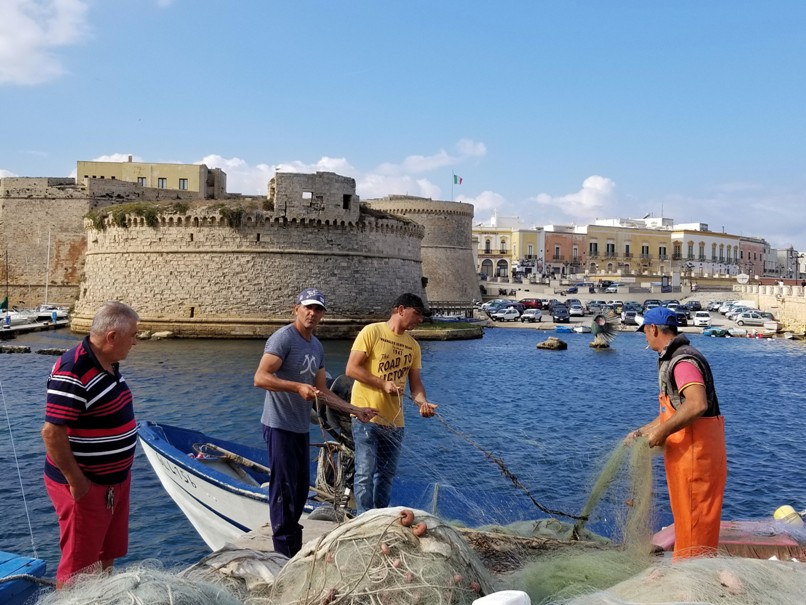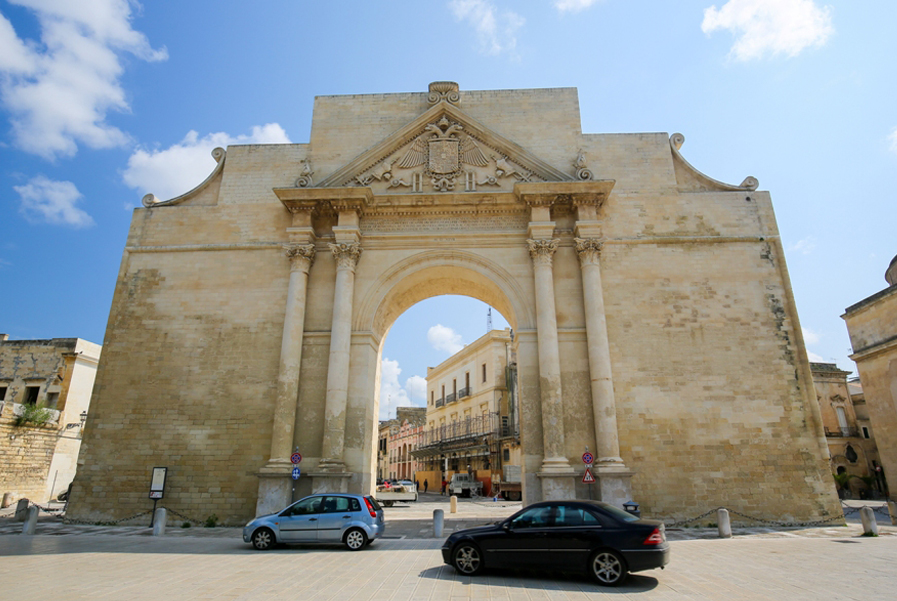Lecce – Puglia
Lecce -once a center of Spanish art and culture overflows with Renaissance, Gothic, and Baroque architecture. It’s a treat for lovers and students of art history. Spend a day and stay overnight before exploring the coastal towns of the Salento, from Otranto to Gallipoli.


Begin your visit of Old Town Lecce in Piazza Sant’Oronzo, A massive square referred to for centuries by the residents of Lecce as Piazza dei Mercati, it was the stage for local markets, riots, commerce, and gatherings. The square is wrapped in buildings displaying a smorgasbord of architectural styles, where you may be surprised to find a very un-Italian McDonald’s standing proudly among centuries-old structures. Welcome to 21st Century tastes!

Notice the mosaic of the city’s coat of arms embedded into the piazza’s floor tiles: A wolf and an oak tree topped by a golden crown.

The below-ground amphitheater in the piazza was built during the 2nd Century during the reign of the Roman Emperor Hadrian at a time when Lecce was a small village close to the Mediterranean. Subsequently, under the rule of Emperor Marcus Aurelius, Lecce expanded, and its economy boomed.

Gladiatorial games, contests of beast against beast, and man against beast were held in the amphitheater, which could accommodate 25,000 spectators. For centuries the amphitheater remained hidden underground until it was discovered in 1901 and excavated in 1938.

Palazzo del Seggio, better known as Il Sedile, is a palace from the late 16th Century built in the Gothic-Renaissance style, which overlooks the amphitheater, and follows its structural curve.

Make your way to Piazza Duomo and the exquisite Baroque cathedral. It’s easy to miss the narrow opening that leads one to the square from Via Vittorio Emanuele II, which somehow makes the first sighting of the square all the more dramatic.


To the right of the Duomo stands the elegant Palazzo Arcivescovile, now the residence of the Archbishop and the official site of the Archdiocese of Lecce. To the right of the Bishop’s Palace is the Baroque style Seminary Palace. The uncluttered simplicity of the square – no stores; no vendors; no cafés; allows one to fully appreciate the elaborate Baroque adornments of the buildings.

Map in hand, wander along the pedestrian side streets and admire the Baroque style palazzos -now renovated and still very much in use – as you go in search of the three ‘gates,’ which are majestic archways that lead to Lecce’s historical city center. The three gates form a large triangle within which lies the Old City.

The Triumphal Arch, Porta Napoli, was erected in 1548 in honor of Charles V. It replaced another gate which lay over the tomb of San Giusto.

The Baroque style Porta Rudiae is the oldest of the three gates. In ancient times a road led to the long-vanished city of Rudiae.

Porta San Biagio-also built in the Baroque style was rebuilt in 1774.

One can’t help noticing the unique quality of Lecce limestone, which seems to change tones depending on the natural light and time of day. The soft quality of the stone, which is found in abundance in the quarries of the Salento, has the perfect texture for creating the elaborate sculptures that adorn the churches, gates, and palazzos of Lecce.

The small piazzas and narrow lanes that one stumbles across during one’s wanderings are ideal spots to settle into atmospheric cafés, enjoy a meal, and a glass of wine while imbibing the beauty of one’s surroundings.


** Disclosure: I did not take the following photos: Piazza San’Oronzo at night; Porta Napoli; Palazzo Sedile.
